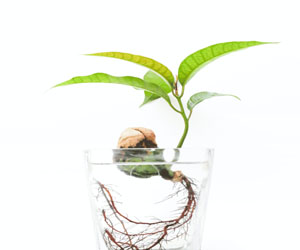


The Power Of Precision Agriculture
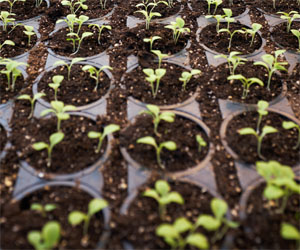
Precision agriculture, also known as precision farming or smart farming, has transformed the landscape of traditional farming practices. It harnesses cutting-edge technology, data analytics, and a deep understanding of agronomy to optimize every aspect of crop and livestock production. In this article, we'll delve into the world of precision agriculture, exploring its benefits, technologies, and the significant role it plays in ensuring food security and environmental sustainability.
Defining Precision Agriculture
Precision agriculture is an innovative approach to farming that utilizes technology to precisely manage resources and make data-driven decisions throughout the agricultural process. It involves the application of various technologies, including satellite imagery, GPS systems, sensors, and data analytics, to monitor and control the variables affecting crop growth, animal husbandry, and farm operations.
Maximizing Resource Efficiency
One of the primary objectives of precision agriculture is to maximize the efficient use of resources. By collecting and analyzing data on soil health, weather conditions, and crop performance, farmers can make informed decisions regarding irrigation, fertilization, and pest control. This not only results in cost savings but also reduces the environmental impact of farming by minimizing the use of water, energy, and chemicals.
Data-Driven Decision Making
The heart of precision agriculture is data. Farmers collect a wealth of information from various sources, such as drones, sensors, and satellite imagery. This data is then processed and analyzed to provide valuable insights. These insights enable farmers to tailor their actions to the specific needs of their fields, crops, or livestock. For example, sensors can monitor soil moisture levels, helping farmers determine when and where to irrigate, while drones can provide a bird's-eye view of crop health, allowing for targeted interventions.
Enhancing Crop Yield And Quality
Precision agriculture has a direct impact on crop yield and quality. By ensuring that crops receive the precise amount of water, nutrients, and care they need, farmers can significantly increase production. Moreover, by minimizing stressors such as pests and diseases through early detection and targeted treatments, crop quality improves, reducing the need for post-harvest chemicals and additives.
Sustainability And Environmental Benefits
Sustainability is a core principle of precision agriculture. By reducing the unnecessary use of resources, precision agriculture minimizes the environmental footprint of farming. This not only benefits the environment but also meets the growing demand for eco-friendly and responsible farming practices. Precision agriculture also reduces soil erosion, water pollution, and greenhouse gas emissions.
Challenges And Future Prospects
While precision agriculture offers tremendous benefits, it is not without its challenges. The initial investment in technology and training can be substantial, and data privacy and security are concerns that need to be addressed. Furthermore, not all farmers have equal access to the technology or the knowledge required to implement precision agriculture practices.
Looking to the future, precision agriculture is expected to continue evolving. Emerging technologies, like artificial intelligence and machine learning, will enhance the accuracy and efficiency of decision-making processes. The integration of automated machinery and robotics will also reduce labor demands while increasing the precision of farm operations.
Precision agriculture is more than a farming practice; it's a revolution in how we produce food. By harnessing the power of data and technology, it not only increases productivity and profitability but also promotes environmental sustainability. As precision agriculture continues to advance, it promises to play a pivotal role in ensuring food security for our growing global population while preserving the planet for future generations.
Creative Solutions For Limited Space
 1. Embrace Vertical Space
1. Embrace Vertical Space
One of the most effective ways to increase storage in a small home is by utilizing vertical space. Install tall bookshelves, wall-mounted cabinets, and floating shelves. These not only provide additional storage but also draw the eye upward, creating a sense of height and spaciousness.
2. Multifunctional Furniture
Invest in furniture that serves multiple purposes. Sofas with hidden storage, beds with built-in drawers, and coffee tables with lift-up tops are just a few examples of multifunctional pieces that can help you declutter your space. These items provide hidden compartments for your belongings, reducing the need for extra storage units.
3. Underutilized Spaces
In small homes, every nook and cranny counts. Look for underutilized spaces, such as the area under the stairs, beneath the bed, or inside closets. These spaces can be transformed into storage solutions like built-in shelves, pull-out drawers, or hanging racks.
A Cleaner, Safer, And Happier Living Space
 Regular Cleaning: Establish a consistent cleaning routine to prevent the buildup of dirt, dust, and allergens. Regular dusting and vacuuming can go a long way in maintaining a clean and healthy home.
Regular Cleaning: Establish a consistent cleaning routine to prevent the buildup of dirt, dust, and allergens. Regular dusting and vacuuming can go a long way in maintaining a clean and healthy home.
Ventilation: Ensure proper ventilation during and after cleaning to disperse any airborne particles. Open windows and doors to let fresh air circulate.
Reduce Clutter: A clutter-free home is easier to clean and reduces hiding spots for dust and allergens.
Use High-Quality Cleaning Tools: Invest in high-quality cleaning tools such as microfiber cloths and mop heads, which can effectively capture and remove dirt and dust.

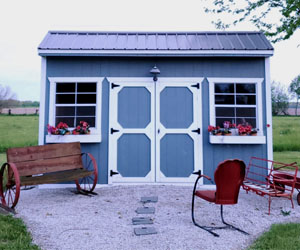

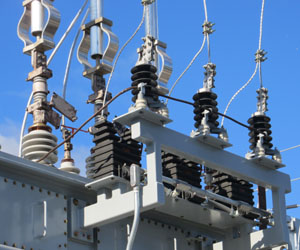

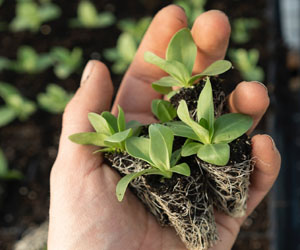
Nurturing Our Lifeline
 Industrial Processes: Industries depend on water for manufacturing and energy production. Water resources play a pivotal role in supporting economic activities and industrial growth.
Industrial Processes: Industries depend on water for manufacturing and energy production. Water resources play a pivotal role in supporting economic activities and industrial growth.
Challenges Facing Water Resources
Despite the undeniable importance of water resources, they face several challenges:
Water Scarcity: Many regions worldwide are grappling with water scarcity, where the demand for water surpasses the available supply. This issue is exacerbated by population growth, urbanization, and climate change.
Water Pollution: Pollution from agricultural runoff, industrial discharges, and inadequate sanitation contaminates water sources, making them unsafe for consumption and detrimental to ecosystems.
Inefficient Water Use: Wasteful water practices in agriculture, industry, and households contribute to water stress and resource depletion.
Deteriorating Ecosystems: The degradation of aquatic ecosystems harms biodiversity and impairs the ability of natural environments to purify water and regulate local climates.
Embracing Self-Sufficiency And Sustainability
 Key Principles Of The Off-Grid Living Movement:
Key Principles Of The Off-Grid Living Movement:
Self-Sufficiency: At the heart of the off-grid living movement is the desire for self-sufficiency. Off-gridders aim to provide for their own basic needs, such as energy, water, and food, without relying on external infrastructure. They often employ renewable energy sources, such as solar panels and wind turbines, and use water collection and purification methods.
Sustainability: Sustainability is a cornerstone of off-grid living. This lifestyle emphasizes responsible and eco-conscious practices, from recycling and composting to sustainable agriculture and permaculture. Off-gridders typically seek to minimize their ecological footprint and reduce waste.
Resourcefulness: Off-grid living requires resourcefulness. Those who embrace this lifestyle must be creative and adaptive to overcome the challenges of living independently. They often build their homes using natural materials and repurpose everyday items to serve multiple purposes.
Connection With Nature: Off-grid living fosters a deep connection with the natural world. Many individuals who choose this lifestyle opt for remote locations, surrounded by the beauty of nature. They often forage for wild edibles, learn about local ecosystems, and live in harmony with the environment.
Minimalism: Minimalism is a common theme in off-grid living. By reducing the reliance on modern conveniences and material possessions, individuals often discover a simpler and more meaningful way of life.
Community: Contrary to the perception of complete isolation, many off-grid individuals form tight-knit communities where like-minded people come together to share knowledge, resources, and a sense of camaraderie. These communities enable collective development of sustainable practices.
Benefits Of The Off-Grid Living Movement:
Reduced Environmental Impact: Off-gridders significantly lower their environmental footprint. They use renewable energy sources, minimize waste, and employ sustainable agricultural methods, making their lifestyles more eco-friendly.
A Glimpse Into Tomorrow's Living Spaces
 A Symphony Of Automation And Connectivity
A Symphony Of Automation And Connectivity
The home of the future is a symphony of automation and connectivity. It's a place where technology seamlessly integrates into every aspect of daily life. From the moment you wake up, your home is ready to assist you. Imagine a home where the lights gradually brighten to mimic the natural sunrise, and your coffee maker starts brewing your morning cup as your alarm goes off. This level of automation is now possible thanks to smart home technologies.
Smart Home Upgrades
One of the key elements of the home of the future is the plethora of smart home upgrades available today. These upgrades have revolutionized the way we interact with our living spaces. From intelligent thermostats that adapt to our preferences to security systems that keep a vigilant eye on our property, these technologies hold the potential to elevate our homes into spaces of the future.
Personalized Living
The home of the future is all about personalization. With smart technologies, your home can learn your habits and adapt to your preferences. For example, smart thermostats can create a tailored heating and cooling schedule based on your daily routines. This not only enhances your comfort but also leads to energy savings, making your home more efficient and eco-friendly.
Security And Peace Of Mind
Home security is a top priority for homeowners, and the home of the future takes it to the next level.
A Call To Action For A Sustainable Future
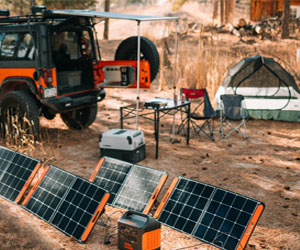 1. Climate Change: One of the most imminent environmental concerns is climate change, driven primarily by the increase in greenhouse gas emissions, such as carbon dioxide. This results in rising global temperatures, extreme weather events, and disruptions to ecosystems and human societies. Climate change is a global crisis that calls for rapid reductions in emissions and widespread adoption of clean energy sources like solar and wind power.
1. Climate Change: One of the most imminent environmental concerns is climate change, driven primarily by the increase in greenhouse gas emissions, such as carbon dioxide. This results in rising global temperatures, extreme weather events, and disruptions to ecosystems and human societies. Climate change is a global crisis that calls for rapid reductions in emissions and widespread adoption of clean energy sources like solar and wind power.
2. Deforestation: The rampant destruction of forests for agriculture, logging, and urban development poses a grave threat to the environment. Forests play a crucial role in carbon sequestration, biodiversity preservation, and climate regulation. Protecting and restoring these ecosystems is essential for our planet's health.
3. Pollution: Environmental pollution, including air, water, and soil pollution, is a significant concern. It adversely impacts human health, disrupts ecosystems, and damages wildlife. Initiatives to reduce pollution, stricter regulations, and sustainable practices are essential to mitigate these effects.
4. Biodiversity Loss: The loss of biodiversity due to habitat destruction, pollution, and invasive species is a significant concern. Biodiversity is essential for ecosystem stability, resilience, and human well-being. Conservation efforts and sustainable land management are crucial for addressing this issue.
5. Resource Depletion: The excessive consumption of natural resources, such as freshwater, minerals, and fossil fuels, is depleting the Earth's finite reserves. Transitioning to a more circular economy, where resources are recycled and reused, is a solution to this pressing problem.